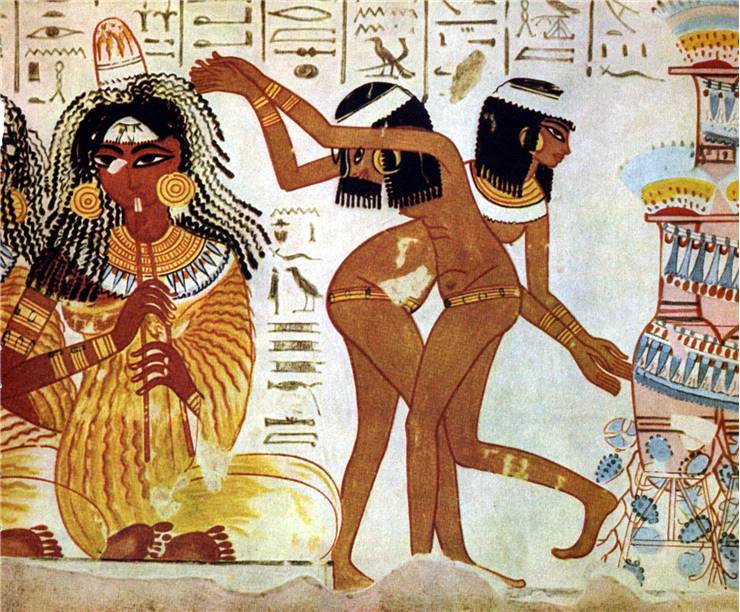Egyptian Clothing - What Clothing Did Egyptians Wear?
Fashion of Ancient Egyptian, which refers to clothing worn from the end of the Neolithic period IN 3100 BC to the end of the Ptolemaic in 30 BC, was basically influenced by the technology of the time as well as fashion ideas, and by climate of the Egypt. Clothes were mainly made by women at home and at workshops run by noblemen.
Clothing of Ancient Egyptian was mainly made of linen which is a textile made of flax fibers that were spun, weaved and sewed. Linen was then dyed with plant dyes but was most often left in its natural color. Linen had quality ranging from the finest woven linen, the byssus for royalty, to the coarse cloth made for peasants. Wool was also known as a material but, because it was considered taboo, it was used rarely, e.g. for coats, and were forbidden in some places like in temples and sanctuaries because wool was considered impure. Animal fibers were also reserved for the wealthy. Lower classes, like peasants, workers and slaves, often wore nothing or a shenti made of flax.

Men of the Old Kingdom, a period that began about 2130 BC, wore the shendyt, a type of wraparound short skirt which they belted at the waist and were sometimes pleated or gathered in the front. As the time went, skirts became longer and sometimes worn with shorter skirt underneath called the kalasiris. This shorter skirt was worn by both women and men. After these, somewhere around 1420 BC, men started wearing light tunics or blouses with sleeves. How elaborate his kilt was showed wealth of the wearer as well as how fine the linen was used to make it.
Women wore more conservative clothing than men. They wore wore simple sheath dresses whose length depended on the social class of the wearer and were held up by one or two straps and whose upper edge was worn above or below the breasts. Dresses were decorated with beadings or feathers. Women also wore shawls, capes, or robes over the dresses.
Egyptians were usually barefoot but, on special occasions, both genders wore the same type of footwear - the sandals made from leather. For priestly class were reserved sandals made of papyrus.
Children didn’t wear clothes until they turned six years old but they wore jewelry such as anklets, bracelets and collars. After that they got clothes which protected them from the harsh climate.
Men and women of higher class shaved their heads and wore wigs made from human and horse hair and decorated.
Pharaohs wore half-pleated kilt wound around the body with a pleated section drawn to the front. Pharaohs also wore, as symbols of power, leopard skins over their shoulders and a lion’s tail hanging from their belt. On their heads they wore the nemes head dress while the nobility wore the khat or head cloth.
Fashion of Ancient Egypt didn’t change much over millennia. Clothes were very simple in construction but again had esthetic value and were different for higher and lower classes.
